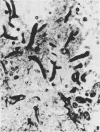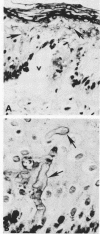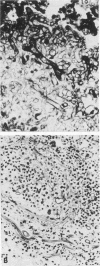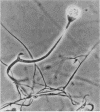Abstract
A case of zygomycosis caused by Apophysomyces elegans in a diabetic, obese female is described. The fungus gained entry into the body through injury to the skin, penetrating the keratin, epidermis, and dermis. Hyphal angioinvasion was observed. Fungal elements invaded the subcutaneous fat, skeletal muscle fibers, nerves, and large blood vessels, resulting in the spread of the infection. The rapidity with which A. elegans invaded the blood vessels left no choice except amputation of the leg to stop the spread of the infection. This zygomycetous fungus closely resembles Absidia corymbifera. It is distinguished by its prominent campanulate apophyses. In its gross colony characteristics and failure to sporulate on routinely used media it resembles Saksenaea vasiformis.
Full text
PDF
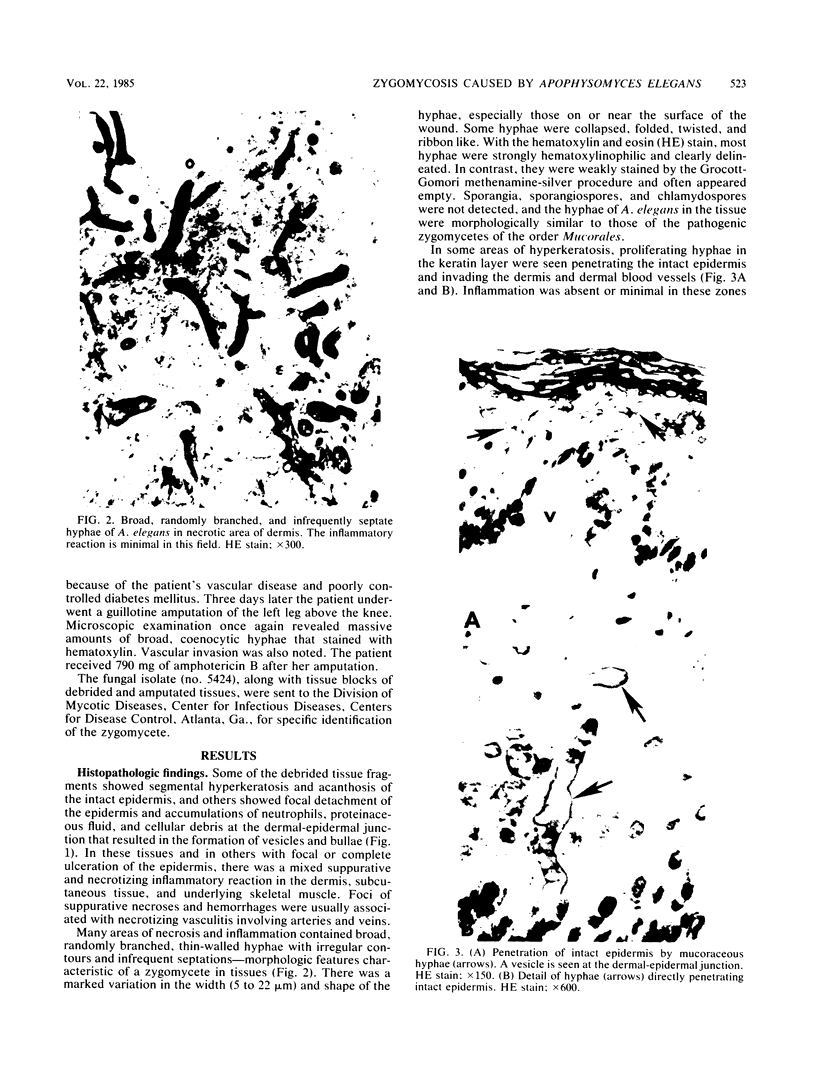
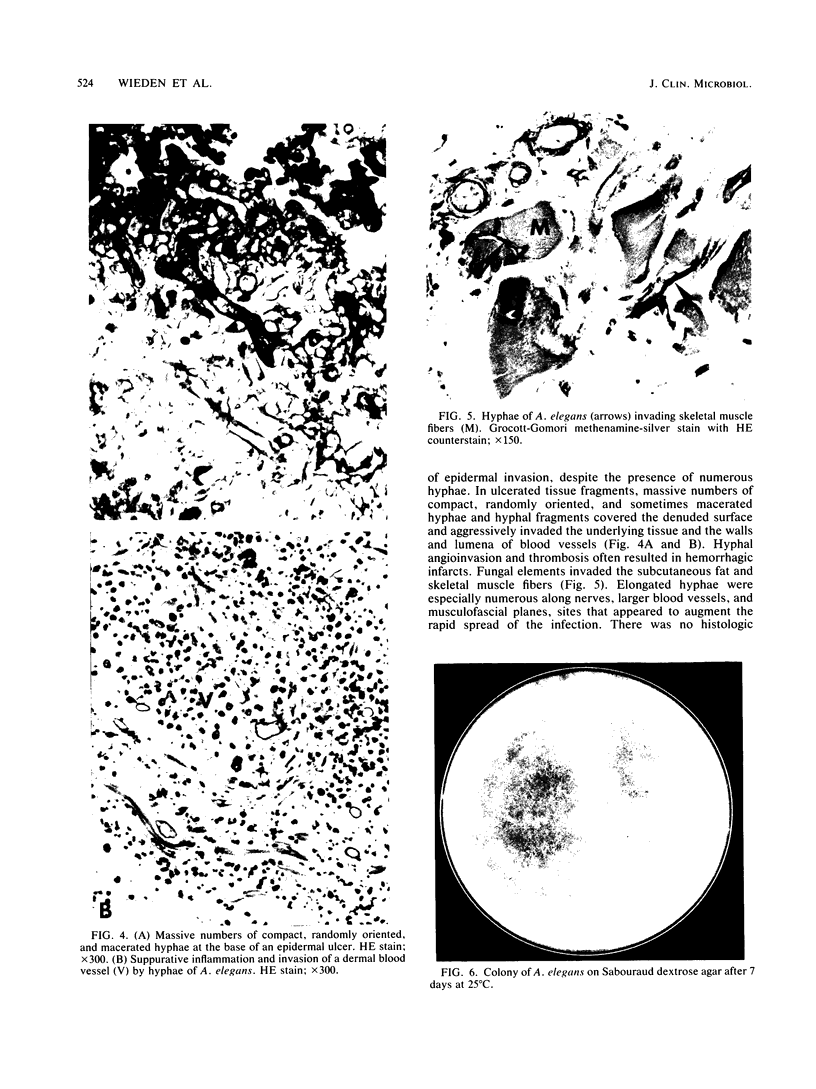

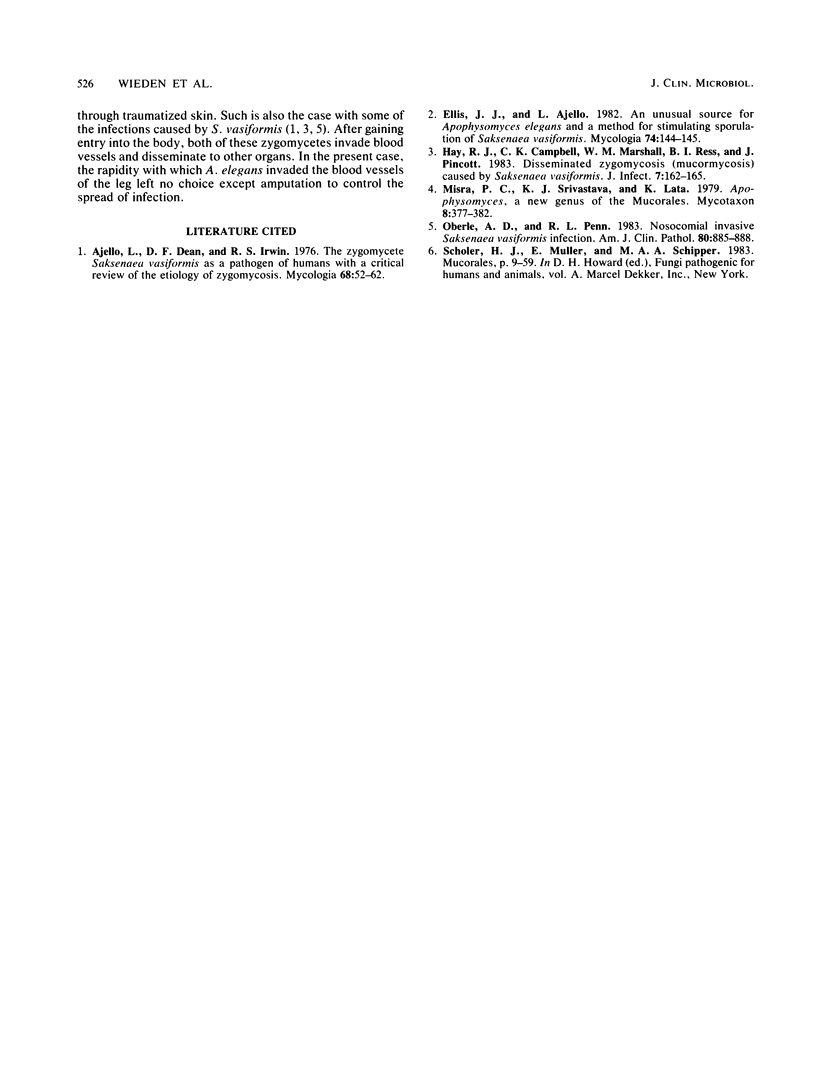
Images in this article
Selected References
These references are in PubMed. This may not be the complete list of references from this article.
- Ajello L., Dean D. F., Irwin R. S. The zygomycete Saksenaea vasiformis as a pathogen of humans with a critical rewiew of the etiology of zygomycosis. Mycologia. 1976 Jan-Feb;68(1):52–62. [PubMed] [Google Scholar]
- Hay R. J., Campbell C. K., Marshall W. M., Rees B. I., Pincott J. Disseminated zygomycosis (mucormycosis) caused by Saksenaea vasiformis. J Infect. 1983 Sep;7(2):162–165. doi: 10.1016/s0163-4453(83)90695-3. [DOI] [PubMed] [Google Scholar]
- Oberle A. D., Penn R. L. Nosocomial invasive Saksenaea vasiformis infection. Am J Clin Pathol. 1983 Dec;80(6):885–888. doi: 10.1093/ajcp/80.6.885. [DOI] [PubMed] [Google Scholar]




